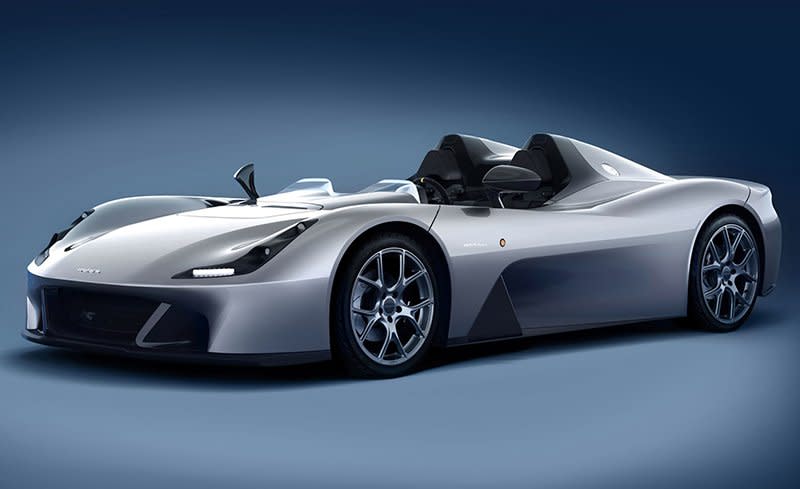What I'd Do Differently: Giampaolo Dallara

From the February 2018 issue
C/D: You studied aeronautical engineering; how did that turn into a job with Ferrari?
GD: I was at university, and one month before graduation, Ferrari was doing some preliminary tests in the wind tunnel of the Polytechnic University of Milan, and [Enzo Ferrari] asked the professor if there was a young man who could help. The professor asked if I was interested. Of course, if you are Italian and Ferrari asks you, then it is a dream.
C/D: How was your relationship with Enzo Ferrari?
GD: He was at the top, and I was at the bottom, so I cannot say that I had much direct contact with him. I remember that every evening he would tour the factory, and he used to have a pen with violet ink. I had left a lot of papers on my desk, it was a mess, and I found a note from him that said, “Please, more order on your table!”
C/D: You left Ferrari for Maserati; how did you handle that?
GD: Not at all well! I did not know that I still had a lot to learn, but I wanted to go to the races. At Ferrari, I was very junior, so the only way to see the races was to pay for a ticket. Maserati offered me a job with the racing team and of course I said yes. And at Maserati, I was involved in super-interesting projects immediately, like the Tipo 63.
C/D: So why move to Lamborghini?
GD: Maserati had financial problems, and they stopped racing. Then Ferruccio Lamborghini was looking for people. The first thing I asked him was, “Will you race?” and he told me yes. I believe he really wanted to race, but then the company was so busy developing the road cars.

C/D: As technical director, you were one of the team that engineered the Miura. Was it a challenge to get the radical mid-engine layout accepted?
GD: In many ways, it was an easy choice; Ford had already raced the GT40 and shown the potential of a car with that layout. Lamborghini always wanted to have a car more advanced than Ferrari, which is why his first front-engined car had four overhead camshafts instead of two . . . But that was not enough. Ferrari was well known, and his car was recognized as the best GT. So when Lamborghini asked for something more advanced, we suggested this and he immediately accepted it.
C/D: Were you happy with the finished car?
GD: The shape was fantastic; the biggest part of the success was because of the design of Bertone. One mistake was the tires, which are the same size front and rear, although the car has most of its weight on the back. We were thinking, “What if you have a puncture?” There was only space in the front for a small spare. The car behaved well close to the limit, but at the limit, there was strong oversteer.
C/D: After a period with De Tomaso, you started your own company building racing chassis for other people. Did the Ferrari 333 SP put you on the map?
GD: Yes, Ferrari asked me if we were ready to do this type of project and of course the answer was yes. There were no papers, just a shake of hands. It was a real success, and although we were in the shadow of Ferrari, there was one driver, Andy Evans, who also had a team in the Indy Racing League. When there was the split [between CART and IRL], he suggested to the organizers of IRL, “Why not go to Dallara and see if they are ready to make cars?” Of course: Yes!
C/D: And now you have created a limited-run road car, the Dallara Stradale. Why the long wait?
GD: We started work on this project several times, but there was always something more important—a customer wanted us to do something—and that took priority. Three or four years ago, I realized it was now or never. I was close to being 80, I could not wait.

Dallara Stradale
C/D: Are you prouder of the Stradale or the Miura?
GD: The Stradale is the car I always wanted to do, to make it light and super basic. My ideal was always the Lotus Seven. Colin Chapman was my hero.
C/D: Above Enzo Ferrari and Ferruccio Lamborghini?
GD: As an engineer, yes. I think he was the greatest. I remember when he came to visit me with Jim Clark. Just two days ago, I found an old photograph that I took when they came to see the Miura. Chapman liked it, he said.
C/D: Any regrets?
GD: One mistake I made too many times was underevaluating the competition. I remember when we did our first Formula 3000 car, we used our first wind tunnel and compared it with the March, which was the winning car at the time. Ours was much better, so we were happy, but we did not take into account that the March would improve as well. It’s easy to believe in the winter that you will be the best, then hard to recover when you are not. Work harder in the winter, it saves a lot of problems!

 Yahoo Autos
Yahoo Autos 